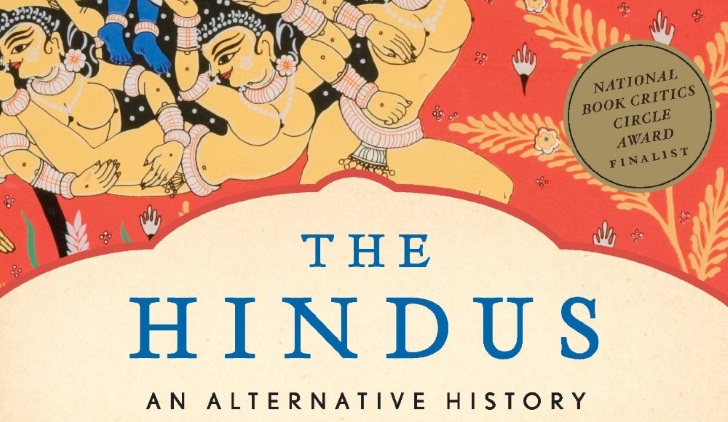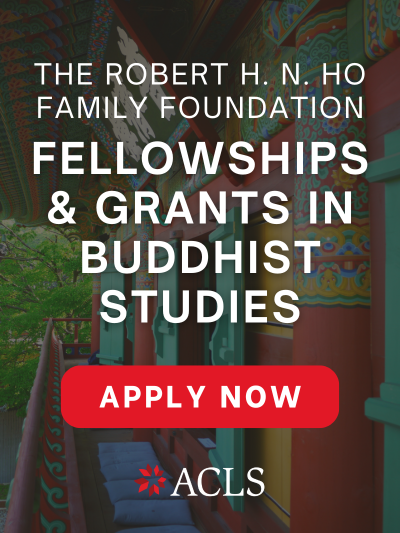The Doniger Affair: Censorship, Self-Censorship, and the Role of the Academy in the Public Understanding of Religion
“Banned!” read headlines last February when, after litigation under India’s blasphemy law, the publisher of Wendy Doniger’s The Hindus: An Alternative History acquiesced to settlement demands to cease publication of the book. That decision set off a firestorm of words in India, where the politics of all things Hindu are fraught to say the least. The rhetoric here in the United States was just as disturbing—not lacking in accusations back and forth, as all sides took what was for them the high ground. Even when there is near unanimous agreement that blasphemy laws create more trouble than peace—and nearly all have difficulty understanding why India, the world’s largest democracy, still has blasphemy laws—our conversations in the United States in this arena were troublingly dissonant and uninformed.
Many involved in debates imported India’s political agendas and arguments, which are marked there by strife and even at times violence, into scholarly debates in the United States. References to the 2002 Gujarat riots appeared again and again in commentaries without sufficient context (as if that specific horrific event was the only religiously motivated violence that has occurred in India, or as if that event was sufficiently related to conversations in America to warrant the reference). Then those references were simplistically repeated by academics and in media commentary.
Once again everyone was talking past each other and hearing nothing worthwhile in the salvos in either direction. Each was placing the “other” in a narrow box of one’s own making, while those placed in the boxes found nothing with which to identify. And I was profoundly saddened. Once again the contemporary American pastime of swipes and counter swipes ruled the day—and, more disturbingly, made its way into the academy.
Professor Doniger tried to bring the discussion back to rationality, illuminating her views in an article in The New York Review of Books. But she conflated book banning in India with American Hindu advocacy for updating California’s K-12 social-history textbook standards here in the United States (which are embarrassingly out of date). At the same time, many Hindus tried to provide their perspectives only to be misunderstood and mischaracterized. But they also used harsh rhetoric against Professor Doniger and sometimes the academy in general. Meanwhile, others—academics as well as Hindu practitioners—silenced themselves for fear of being labeled in ways that could undermine their credibility in the academy or in their own religious communities. None of this is good for public discourse, especially in the academy. It results in marginalizing perspectives to such a degree that there is a kind of “banning” in effect, if not in law.
I think it would be worthwhile for us to pause and reflect on how we in the academy can have a discussion in situations like this that enhances understanding, rather than divide ourselves into camps and defend our positions.
Let’s start with a few basic facts. India’s blasphemy (or religion defamation) law was passed in 1927 under the British Raj with the purported purpose of mitigating interreligious strife and violence. The law, in a British attempt at inclusion, applies to “outraging the religious feelings” of any religion, not just of Hinduism—as some media reporting on the controversy and even some scholarly commentators implied, often by way of omission. Further, Doniger’s book is not the first to come under attack in India. Other titles include The Satanic Verses (Islam) and The Da Vinci Code (Christianity), the book and the film, as well as other writings offending Muslims, Hindus, Sikhs, and Christians, which include tweets, jokes, and translations of others works. Further, India is not the only nation that limits expression about religion. According to the Pew Research Religion & Public Life Project, thirty-two countries have such laws, including eight European countries: the Netherlands, Greece, Ireland, Italy, Malta, Denmark, Poland, and Germany.
All of this is, of course, an anathema to AAR’s academic mission, which states, in part, “The Academy is dedicated to furthering knowledge of religion and religious institutions in all their forms and manifestations. . . . Within a context of free inquiry and critical examination, the Academy welcomes all disciplined reflection on religion—both from within and outside of communities of belief and practice—and seeks to enhance its broad public understanding.” In the United States and therefore in the US academy, we are free under the law to be as disrespectful of anyone’s religion, or religion altogether, as we like. Our remedy? More speech, including more scholarship.
I would like to suggest, however, that the “more speech” solution may not be functioning as well as we may think. Let’s consider: Is the academic forum as open as we say it is? What constraints stand in the way of a truly vibrant discourse that is continually furthering “knowledge of religion and religious institutions in all their forms and manifestations”? Are there constraints that result in a kind of censorship over and above the law? I think so. And, as Professor Doniger herself suggests, the controversy about her book provides a good case for examining the boundaries around the discourse we refer to as “academic.” However, I would like to come at the issue from a different direction.
In her New York Review of Books article, Professor Doniger suggested that the controversy revolves primarily around a distinction between academic discipline and piety. “This argument . . . is about the clash between pious and academic ways of talking about religion . . .” I think, however, that the issue cuts across both of those categories, having more to do with Hinduism’s colonial past and the present effects of that legacy. Western scholars (the inheritors of that colonial past) have been the main interpreters of “Hinduism” from the advent of the study of the category we call “religion.” It should be no surprise, therefore, that the main issue in the controversy involves such basic questions as: What is “Hinduism” and who are the “Hindus” academics are studying? And, importantly, who gets to decide? Only the academics? Do practitioners have a voice?
As we all know, “religion” is a notoriously difficult category to define. As Wilfred Cantwell Smith noted in The Meaning and End of Religion (1962), distinguishing “religion” as a phenomenon separate from other facets of life is a particularly Western notion, born so we could think in terms of a separate church and state (whether that arose from Roman Catholic popes who claimed the right to a political check on empires and nation-states or from the United States where the founders conceived of the state as a bulwark against religious domination and, at the same time, declared religion to be free from state interference). Then an academy determined to study “religion” made further attempts to circumscribe it—whatever “it” is. No one can say for sure.
Now consider the difficulty of delineating the boundaries of “Hinduism.” Although outsiders and some Indians used the term “Hindu” to designate the peoples of the Indus Valley and beyond, it is generally understood that the British popularized the term “Hinduism” to mean all the sacred beliefs and practices (the “religions,” if you will) of India (as distinguished from Islam and Christianity).
Yet many Indians claimed the term for themselves. For some “Hinduism” was more narrowly conceived as the traditions that are based on the Vedas. Others more broadly included all Dharmic-based traditions homegrown or endemic to India (or even “indigenous,” although that term is contested too), including various local sacred manifestations, as well as Jains, Sikhs, and Buddhists.
Thus, the boundaries of what constitutes “Hinduism” have always been porous, much like the category “religion” to begin with. Consequently, it is no surprise that there would be controversy when Doniger, a Western scholar with a lauded reputation in her field, included Sanskrit writings that are outside the bounds circumscribed by many Hindus as an alternative “Hindu” history.
Many American scholars (even with all of our diversity) have a tendency to place debates from elsewhere into Western categories and frames (another example of the West’s chauvinistic tendencies when it comes to the global community). That ends up contributing to confusion about what is happening abroad, as well as serious distortions that undermine the discourse at home. Those distortions, especially when they arise in the academy, can have serious effects on attitudes and even policy making in the United States, when they find their way across disciplinary lines and into social, legal, and political circles. This concerns many Hindus, as well as others in minority religions, in the United States.
That is why it is important to understand here that in India the question “What is Hinduism?” is part of the larger conversation (and sometimes violence) about the politics of oppression. Powerful secular forces there seek to identify Hinduism with its oppressive caste system—and not much else. That would be like defining Christianity as the religion that burned and tortured heretics, or that supported slavery in the South, or that today incites believers to violence against “sorcerers” in Africa and Papua New Guinea. Then, something called “Christianity” could not arise out of and away from that history and be distinguished from those current practices. It isn’t difficult to recognize that defining any religion only by its most disturbing attributes is highly likely to define it into extinction eventually. Many Hindus perceive that threat when their efforts to valorize and emphasize aspects of Hinduism that they deem beneficial—more authentic than caste or violence in India—are thwarted by those who treat every such effort as insidious “whitewashing.” I certainly hope it is not the academy’s position that only adherents in certain favored religions can legitimately have a discussion about the normative boundaries of their religion.
In the midst of this, consider that, on the one hand, the academy often regards those who investigate “other” religions from the outside as more likely to be “unbiased.” On the other hand, those who investigate from the inside (scholar-practitioners) are subject to special scrutiny, and non-scholar practitioners have no voice at all. Certainly, a scholar-practitioner needs to show special care that her or his own subjective experience does not cloud ability to take into account a full range of considerations of the object of study. However, I would like to suggest that the presumption of the objectivity of the “outsider” scholar belies another sort of bias.
Religious studies discourse is, in effect, an ongoing narrative that derives from the West’s nineteenth-century categories and cognitive, social, and political frames. Of course, that narrative has a tradition of challenge and revision, but it nevertheless, at any one time, constrains the discourse considerably. It functions in analogous ways to the Common Law Tradition, where the litigant must reference previous cases (analogous, e.g., to academia’s categories, frames, narratives, or “shared assumptions” in Doniger’s words) and show how one’s own interpretations are similar or distinguishable. That makes striking out on a new scholarly track extremely difficult. Ask any new scholar. They know.
Of course, if a scholar has been around awhile, quite awhile, then there is more liberty to set a new course, but even then the scholar must have a whole body of work referencing in some way the existing scholarly narratives before she or he can take that leap. After that leap, the resulting work might become a new touchstone for scholarly conversation. In other words, there is considerable privilege involved in who gets to speak and when and how far one can step out of the academic cultural milieu before one has crossed the line of credibility. All of this is to say that especially when the “other” is the object of study, scholars need to remember that what appears to be “objective” may just be derived from a palatable narrative embedded in, or in conversation with, a dominant frame of reference.
Enter the Doniger book controversy. Instead of a rich conversation in the American academy about the extents and limits of “Hinduism,” there was more of an effort to close ranks, invoking India’s political struggles, with the effect of “banning” important voices from the discussion. This phenomenon was exacerbated as the controversy became framed in the United States as a debate between privileged, upper caste Hindus (oppressors) and an academic who is including voices from the margins (women, animals, and low caste Hindus). The result was that the Hindus who objected to the book because of its overly broad and disrespectful, from their perspective, definition and discussion of “Hinduism” were labeled as unwilling to give up their privileged position to take account of the marginalized and oppressed—when that wasn’t their focus at all. Or they were discounted as not worthy of consideration in an “academic” discussion about the extents of “Hinduism.”
Hindu sentiments and frustrations in this context are understandable. But inflammatory rhetoric aimed at members of the academy is not helpful, to say the least, where sincere attempts at rigorous investigations, uncovering of new interpretations in the sober academic discourse (not always easily untangled) are the currency. Yet academics need to understand that real violence can be done, as well, when those who have the privileged academic voice in the discourse fail to understand what is at stake for practitioners in the public square. Rather, we should be asking: Are their claims behind the rhetoric worthy of academic study? Can a scholar be recognized as credible for investigating a controversial (from the academy’s perspective) practitioner perspective? Or are these considerations, in effect, “banned” from the discourse here because activists on the other side of the globe have taken politically unpalatable stances there?
I have read The Hindus. I can understand why Professor Doniger’s exploration of marginal Sanskrit texts and use of irreverent language and controversial references (e.g., to a “dildo” and to an ogress with “excessive vaginas” who is immobilized like “mating dogs” stuck together) could offend. However, overall the book is a justifiable investigation on the boundaries of what some might call “Hinduism.” She even supports one of many Hindus’ claims: the Aryan invasion theory—which is used in India to discredit Hindus and divide Indians—is not the best interpretation of the migration of peoples in India. And, ironically, like many Hindus, Doniger eschews the historical Christian missionary and British cultural outlook on Hinduism that denigrated it for sexualization of the sacred and supposed backwardness. Moreover, Doniger’s book expressly invites others to engage in debate about her “alternative history.” No one could ask more of a scholar. That’s what we do.
Disturbingly, however, it seemed that most of those on Doniger’s “side” of the debate were unwilling to consider US Hindu practitioners’ challenges. Yet Hindus brought critical perspectives to the conversation about what Hinduism means for themselves and the world today that could be investigated academically. Was anyone curious? I hope so because it is unlikely that every Hindu’s effort to reform, refine, and redefine Hinduism for the contemporary era is merely the whitewashing of Hinduism’s legacy of caste or an appeal to Hindu nationalism in India.
Like those committed to other world religions, Hindus aspire to assert their particular claims to the sacred in this globalizing world—to provide their answers to the “Big Questions” for all time, but especially for our time. That is, many Hindus maintain that Hinduism (as the third largest religion in the world) has an important, even critical, contribution to offer the global conversation for the planet’s future and humanity’s place in it. That aspiration is worthy of study, even when it comes wrapped in anger, frustration, and claims that do not fit easily into the trajectory of our existing scholarly narratives.
|
For more conversations on this topic during the 2014 Annual Meetings, San Diego, plan to attend these sessions: The Doniger Affair: Censorship, Self-Censorship, and the Role of the Academy in the Public Understanding of Religion (A23–202), sponsored by the Committee on the Public Understanding of Religion, Sunday, November 23rd, 1:00–2:30 PM. The Politics of Religious Sentiment: Religion and the Indian Public in the Light of the Doniger/Penguin Affair (A23-125), sponsored by the Hinduism Group and Law, Religion, and Culture Group, Sunday, November 23rd, 9:00–11:30 AM. |

Barbara A. McGraw, J.D., Ph.D., is the Director of the Center for Engaged Religious Pluralism and Professor, Social Ethics, Law, and Public Life at Saint Mary’s College of California. Among other things, she is the coauthor (with Robert S. Ellwood) of Many Peoples, Many Faiths: Women and Men in the World Religions. She is a member of the AAR’s Committee on the Public Understanding of Religion.







